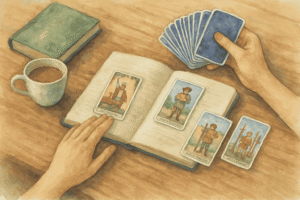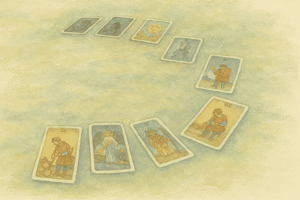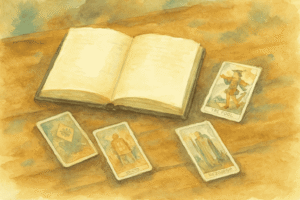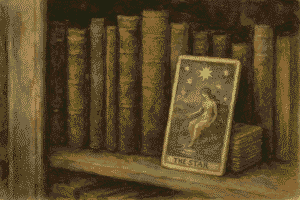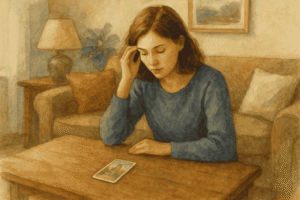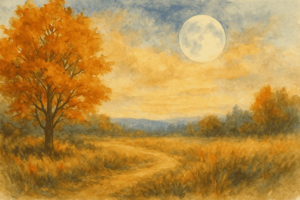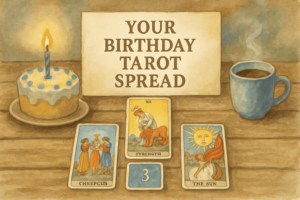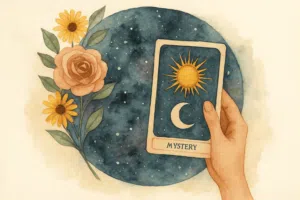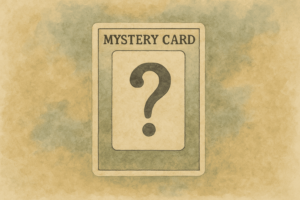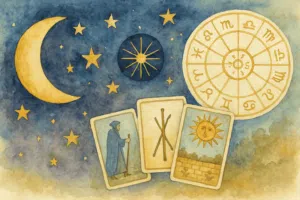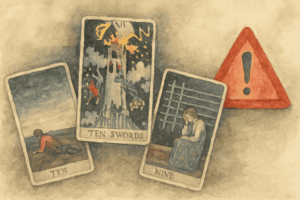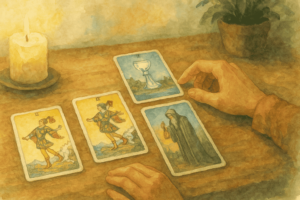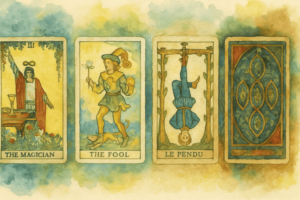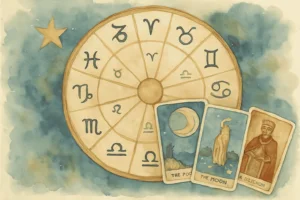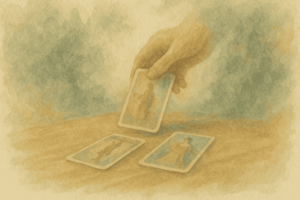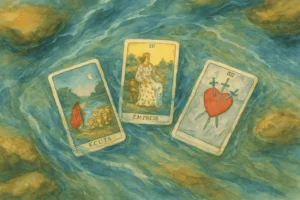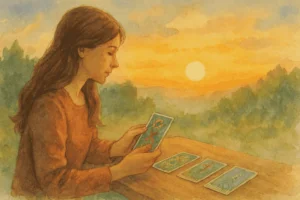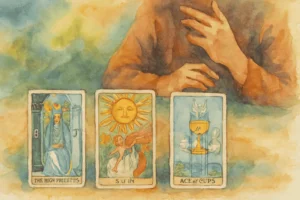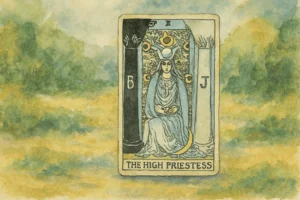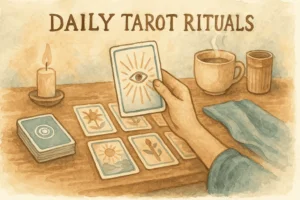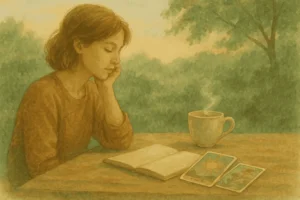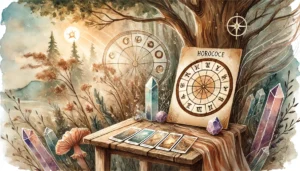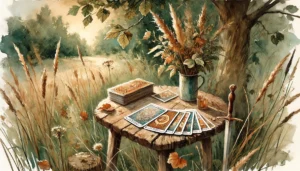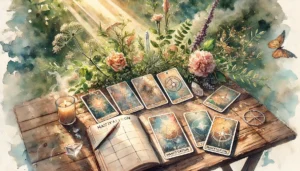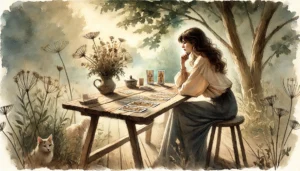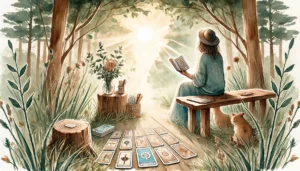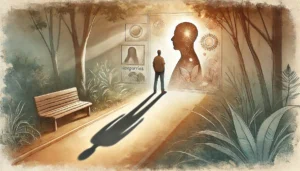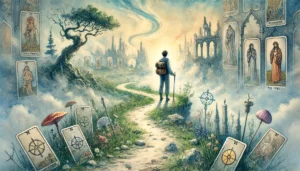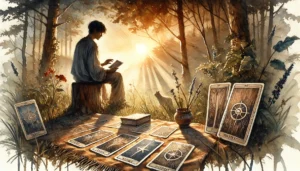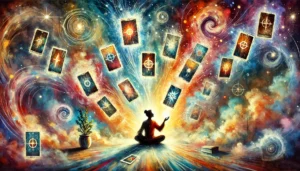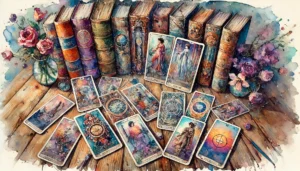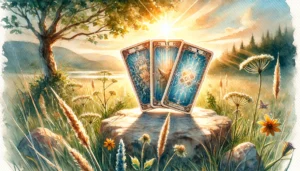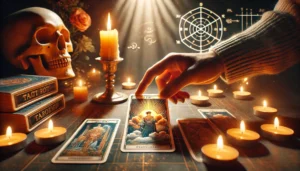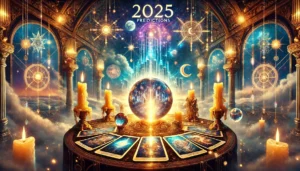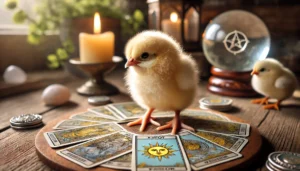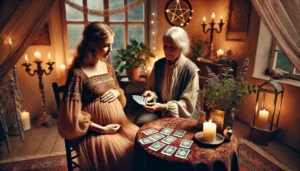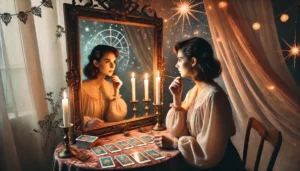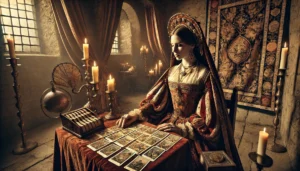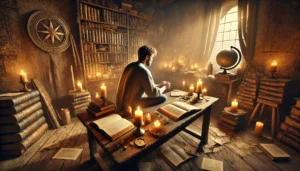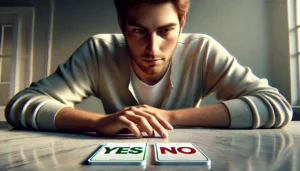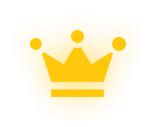¿Alguna vez has contemplado una baraja de tarot y te has preguntado por la historia tras sus intrincadas imágenes e interpretaciones místicas? La historia del tarot es un tapiz cautivador entre el entretenimiento, la espiritualidad y la sabiduría esotérica. Comprender los orígenes y la evolución de las cartas del tarot no solo enriquece nuestra apreciación de estas hermosas herramientas, sino que también revela cómo han llegado a servir como guías en nuestros caminos personales. Embarquémonos juntos en este fascinante viaje, explorando el origen del tarot y cómo evolucionó de ser simples naipes a profundos instrumentos espirituales.
Los orígenes del Tarot: Un comienzo lúdico
Las cartas del tarot surgieron en la Europa del siglo XV, donde se conocían como "trionfi" o "tarocchi". Inicialmente, se crearon para el disfrute, utilizándose en diversos juegos de bazas que deleitaban a la nobleza (Kaplan, 2000). El colorido y elaborado arte de estas barajas era una forma de entretenimiento que reflejaba la cultura y la creatividad de la época. Lejos de ser herramientas místicas, las cartas formaban parte del tejido social, utilizándose en juegos desenfadados en reuniones.
Un cambio de percepción
Sin embargo, con el paso de los siglos y el florecimiento del interés metafísico, las cartas del tarot experimentaron una transformación radical. Para el siglo XVIII, el rico simbolismo de las cartas comenzó a atraer la atención de místicos y eruditos. Los ocultistas comenzaron a asociarlas con la adivinación, un concepto que originalmente no formaba parte de su diseño. Los significados simbólicos de las imágenes permitían una interpretación personal, convirtiendo al tarot en una herramienta atractiva para quienes buscaban guía y comprensión de sus vidas.
Influencia de las tradiciones esotéricas
A medida que el tarot ganó popularidad, captó el interés de diversas tradiciones esotéricas. La Orden Hermética de la Aurora Dorada, fundada a finales del siglo XIX, desempeñó un papel fundamental en el resurgimiento y la sistematización del tarot con fines espirituales. Pensadores influyentes, como Eliphas Levi y Aleister Crowley, consolidaron aún más la importancia del tarot en el mundo ocultista, enriqueciendo las imágenes y las interpretaciones que los lectores utilizaban. Estas figuras contribuyeron a un resurgimiento del entusiasmo por el tarot, presentándolo no solo como un juego, sino como un vehículo para la intuición.
La baraja Rider-Waite-Smith: un momento decisivo
Uno de los puntos de inflexión más cruciales en la historia del tarot se produjo en 1909 con la publicación de la baraja Rider-Waite-Smith. Encargada por A. E. Waite e ilustrada por Pamela Colman Smith, esta baraja introdujo imágenes claras y significados estandarizados que moldearon la forma en que se entiende y se lee el tarot hoy en día. Abrió las puertas al uso del tarot en la adivinación, impulsando a muchos a explorar su relación con las cartas en busca de guía espiritual y autodescubrimiento. El arte intuitivo de leer el tarot se hizo accesible a un público más amplio y contribuyó a impulsar un resurgimiento del tarot como una herramienta espiritual significativa.
El Tarot Moderno y su Integración Cultural
Durante el último siglo, el tarot se ha integrado a la perfección con diversos campos como la astrología, la numerología e incluso la psicología. El simbolismo de las cartas se ha utilizado para una exploración psicológica más profunda, ayudando a las personas a comprender sus emociones y comportamientos. Esta fusión del tarot con los principios psicológicos ha animado a una nueva generación a explorar cómo el tarot puede mejorar el bienestar emocional y el crecimiento personal.
Hoy, en una época en la que la tecnología se cruza con la espiritualidad, muchos entusiastas incluso están recurriendo a Tarot de IA en línea gratuito Para orientación. Este enfoque moderno permite explorar el tarot más allá de las cartas físicas, ampliando la accesibilidad y la interacción con su sabiduría ancestral.
Abraza tu viaje
Explorar la historia del tarot no solo ofrece una perspectiva de su evolución, sino que también te invita a reflexionar sobre tu trayectoria personal. Ya sea que sientas curiosidad por la adivinación, busques apoyo emocional o simplemente te atraiga el arte de las cartas, comprender el rico legado del tarot puede fortalecer tu conexión con estas fascinantes herramientas. Al sumergirte en su historia, abres la puerta a descubrir cómo el tarot puede aportar claridad, perspectiva y un toque de magia a tu vida.
Referencias
- Kaplan, S. La enciclopedia del Tarot, Volumen I. 2000.
- Historia del Tarot: Los orígenes de las cartas del Tarot. 2021.
- Psicología y Tarot. Psychology Today, 2022.


